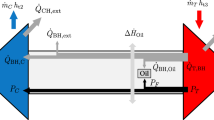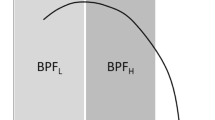Abstract
Characterisation of turbocharger performance is important in gas exchange simulation and engine control unit calibration. Compressor and turbine performance maps are measured on a hot-gas test bed. As a result their performance maps have a large dependence on heat transfer. Gas exchange simulation software assumes adiabatic compressor and turbine maps. The direct use of measured maps leads to defective simulation results. The power balance of compressor and turbine in steady state operation leads to limited turbine performance maps. The acceleration of compressor and turbine are not covered in those maps. In gas exchange simulation the performance maps are extrapolated to cover the entire range of operation. Simulations using the extrapolated maps do not correlate with empirical results. This paper presents methods for reconciling results derived from maps with those observed in the real world over the same extrapolated operating range. The methods use existing maps without additional information to construct performance maps relevant for operation on internal combustion engines. A recipe approach for the application to measured maps is developed and applied to examples. Compared to mathematical extrapolation, the presented methods yield empirically sound extrapolations and improve the quality of gas exchange simulation results.
Zusammenfassung
Die Beschreibung der Eigenschaften von Turboladern ist wichtig für die Ladungswechselrechnung und die Bedatung von Motorsteuergeräten. Verdichter- und Turbinenkennfelder werden auf Heißgasprüfständen gemessen. Wärmeströme in Verdichter und Turbine haben einen großen Einfluss auf die gemessenen Verdichter- und Turbinenkennfelder. Software zur Ladungswechselrechnung geht meist von adiabat vermessenen Verdichter- und Turbinenkennfeldern aus. Die direkte Verwendung solcher Kennfelder führt zu fehlerhaften Simulationsergebnissen. Die Leistungsbilanz zwischen Verdichter und Turbine im stationären Betrieb schränkt die Kennfelder auf diese Bereiche ein. Die Beschleunigung von Verdichter und Turbine wird in diesen Kennfeldern nicht berücksichtigt. In der Software zur Ladungswechselrechnung werden die Kennfelder in den instationären Bereich extrapoliert. In dem extrapolierten Bereich kommt es zu nicht physikalischen Ergebnissen. In dieser Veröffentlichung werden Methoden zur Korrektur der Kennfelder bzgl. Wärmestrom vorgestellt. Die gemessenen Kennfelder können ohne zusätzliche Informationen zur Erstellung von Kennfeldern für den gesammten Motorprozess verwendet werden. Mit den detailliert dargestellten Arbeitsschritten lassen sich die Methoden auf gemessen Kennfelder anwenden. Die vorgestellten Methoden werden auf Beispiele angewendet. Im Vergleich zu rein mathematischen Extrapolationen werden mit den vorgestellten Methoden physikalisch sinnvolle Extrapolationen erstellt und die Qualität von Ladungswechselrechnungen kann entsprechend gesteigert werden.














Similar content being viewed by others
References
Baines N, Wygant K, Dris A (2010) The analysis of heat transfer in autotmotive turbochargers J Eng Gas Turbines and Power 132:8
Barenblatt GI (2003) Scaling. Cambridge University Press, Cambridge
Bohl W, Elmendorf W (2008) Strömungsmaschinen 1 Vogel Buchverlag, Würzburg
Bohn D (2002) TC-Wärmeströme: Modellierung des Wärmeflusses im und am Systeme Turbolader; Abschlussbericht Vorhaben Nr. 755
Casey MV, Robinson CJ (2006) A guide to turbocharger compressor characteristics, M. Bargende Dieselmotorentechnik, 10th Symposium, TAE Esslingen
Casey MV, Fesich M (2010) The efficiency of turbocharger components with diabatic flows. J Eng Gas Turbines Power 132(7):9
Chesse P, Chalet D, Tauxia X (2011) Impact of the heat transfer on the performance calculations of automotive turbochargers. Oil Gas Sci Technol 66(5):791–800
Churchill SW, Usagi R (1974) A standardized procedure for the production of correlations in the form of a common empirical equation. Ind Eng Chem Fundam 13(1):39–44
ElHadef J, Colin G, Talon V, Chamaillard Y (2012) New physics-based turbocharger data-maps extrapolation algorithms: validation on a spark ignited engine, 2012 IFAC Workshop on Engine and Powertrain Control Simulation and Modeling (ECOSIM) Rueil-Malmaison France
Erikson L (2007) Modeling and control of turbocharged SI and DI Engines. Oil Gas Sci Technol 62(4):523–538
Gülich JF (2003) Disk friction losses of closed turbomachine impellers. Forsch Ingenieurwes 68:87–95
Leufven O, Eriksson L (2010) Engine test bench turbo mapping, SAE Technical Paper 2010-01-1232, SAE World Congress and Exhibition 2010, Detroit USA
Lüddecke B, Filsinger D, Erhard J, Bargende M (2012) Wärmestromkorrektur und Drehmomentbestimmung für die erweiterte Kennfeldvermessung von Abgasturboladerturbinen, 17. Aufladetechnische Konferenz, Dresden, 2012
Glassman AJ (1972) Turbine design and application, NASA SP 290, 1972
Moustapha H, Zelesky M, Baines N, Japikse D (2003) Axial and radial turbines, Concepts NREC
Reuter S, Kaufmann A, Koch A (2011) Measuring method for exhaust gas turbocharger with pulsating hot gas flow, MTZ Worldwide 2011–04. Springer,Wiesbaden
Sailer T, Bucher S, Durst B, Schwarz C (2011) Simulation of the compressor performance of exhaust gas turbochargers, MTZ Worldwide 2011–01. Springer,Wiesbaden
Scharf J, Aymanns R, Schorn N, Smiljanovski V, Uhlmann T (2010) Methods for extended turbocharger mapping and turbocharger assessment, 15. Aufladetechnische Konferenz, Dresden, 2010
Shaaban S (2004) Experimental investigation and extended simulation of turbocharger non-adiabatic performance, PhD. Thesis, Leibnitz Universität Hannover
Shaaban S, Seume J (2012) Impact of turbocharger non-adiabatic operation on engine volumetric efficiency and turbo Lag. Int J Rotating Machinery 2012:625453
Skopil M (2007) Moderne Turboaufladung. Expert Verlag, New York
Swain E (2005) Improving a one-dimensional centrifugal compressor performance prediction method. Proc.IMechE Vol 219, J. Power and Energy 2005
Turbocharger Gas Stand Test Code, SAE-J1826-199503
Turbocharger nomenclature and terminology SAE-J922-201106
Whitfield A, Baines NC (1990) Design of radial turbomachines. Longman Scientific and Technical, Harlow
Author information
Authors and Affiliations
Corresponding author
Rights and permissions
About this article
Cite this article
Kaufmann, A. Using Turbocharger maps in gas exchange simulation and engine control units. Forsch Ingenieurwes 78, 45–57 (2014). https://doi.org/10.1007/s10010-014-0171-0
Received:
Published:
Issue Date:
DOI: https://doi.org/10.1007/s10010-014-0171-0




